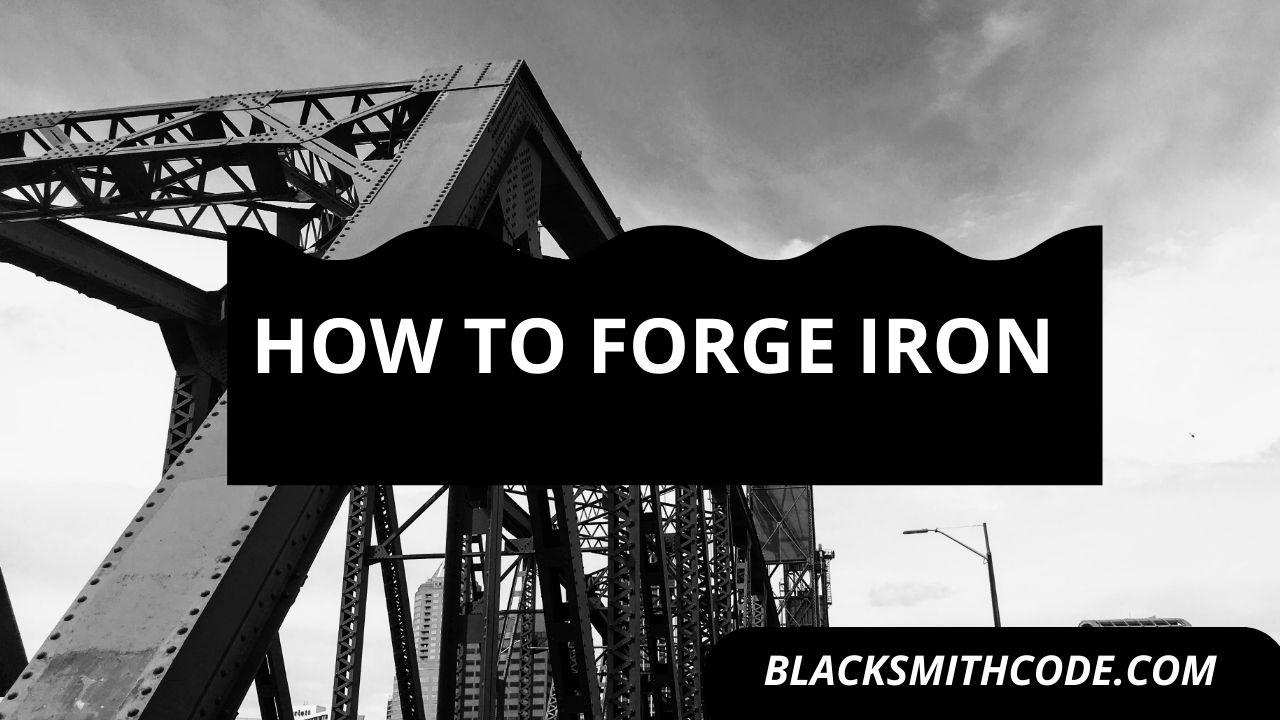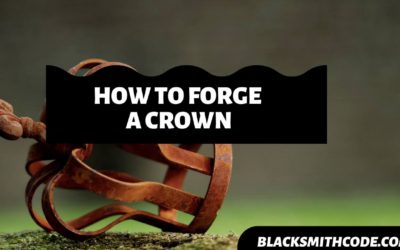Do you know that iron and steel are the most used materials by blacksmiths? Iron is a popular material among blacksmiths. It is versatile and useful for various processes. So, let’s find out how to forge a iron.
Forging iron is as old as blacksmithing itself. It is one of the materials that raised the curiosity of men of the early age to make useful materials from such a hard substance. It inspired the early men to the art of shaping and carving materials with heat and pressure.
Forging iron is a critical skill for blacksmiths. The good news is that forging iron is quite similar to the forging of steel. Therefore, if you are good with forging steel, you might not have any problem forging iron.
However, the bad news is that working with iron requires more patience and techniques. In a broad sense, it is useful for forging a wide variety of materials and supplies. Working with metal has some uniform steps.
The variation mostly comes from the type of shape you want to give the metal. Similarly, most people usually find it hard to differentiate between metal and steel.
First off, iron is metal while steel is an alloy. Iron is an element that exists in nature, while steel needs human-made synthesis. These two differences account for the variation in their properties.
These variations, in turn, have a significant impact on how you forge them. If you want to learn how to form iron, you are in the right place. Learn how to forge iron with the easy steps below.
Essentials
The essentials for forging iron include;
Forge
Grinder
Anvil
Instructions on How to forge iron
Step 1: Get Your Materials
Firstly, it is good enough that iron exists naturally on its own. Therefore, you can find it almost anywhere. Secondly, most iron you would find has consistent properties.
Consequently, you can make use of scrap iron for almost all processes. Alternatively, you can also make iron from iron bloom if you have the technical know-how.
Step 2: Measurement
The measurement of your iron is dependent on what you intend to create. Often, it is best to use an iron rod because it is easier to make accurate measurements and precise cuts. Also, it is easier to beat an iron rod until it becomes flat than to form an iron rod from flat material.
Step 3: Heating
First off, you need to prepare your forge to attain a suitable temperature. The temperature required to forge iron is slightly higher than that of steel. The best temperature for forging iron is between 1400 to 1500℃.
Quick Steps
- Prepare your forge.
- Raise it to a suitable temperature.
- Place your iron gently in the forge.
Step 4: Drawing
Once you are done with heating the iron, it is time to draw it out. Drawing is just like forming the shape of the product you intend to create. Make use of hammer and anvil for this process.
Quick Steps
- Use a suitable hammer depending on your project.
- Hammer the iron precisely until to achieve your desired result.
- If the iron gets cold during drawing, you have to reheat it until it becomes malleable again.
- The techniques required for the hammering process is dependent on what you intend to create.
Step 5: Upsetting
Upsetting is a crucial step in the forging process of iron. It is upsetting in forging aims at adding volume to your material. It works by reducing the length of the iron while increasing the diameter.
Step 6: Peening
Peening is a similar step to upsetting and aims at extending the end of the iron in a particular direction. The suitable tool for this process is the ball-peen hammer.
Note: The steps 5 and 6 above are subject to the discretion of the blacksmiths. While they are necessary for some projects, you can easily overlook it if they are not essential for what you intend to create.
Step 7: Joining
Most processes with the iron will require you to join two separate units. In this case, welding is the best method of joining. However, you need the use some techniques to have a clean weld and remember to clean up the welding slag afterwards.
Step 8: Grinding
The grinding process follows immediately. The grinding process aims at getting a smooth and fine edge for your projects. The process will not be complicated if you are familiar with grinding other materials.
Step 9: Finishing
This is the most flexible step in the entire process. The type of finishing is dependent on the material you want to make. The essence of finishing is to give you an appealing outlook.
FAQs on How to forge iron
Question
What is the difference between iron and cast iron?
Cast iron is different from iron due to what it contains. The component of cast iron gives it some essential characteristics that differentiate it from normal iron. Cast iron contains a little percentage of carbon.
It contains about two to six per cent carbon by weight. Due to the presence of carbon, cast iron is sturdy and brittle. Cast iron easily breaks so you cannot forge it unless heat-treated and converted to malleable iron.
Question
Can I replace cast iron with forge iron?
You can replace cast iron with forge iron only that the output you will get when using either of the two kinds of iron will be different. Cast iron is beneficial in some tasks but not suitable for forging. You should make use of forge iron whenever you want to forge.
Question
Can I forge with my iron?
Iron is a good forging material. Iron and steel are common forging materials with steel being the most used and iron the following suit. Due to iron’s forging abilities, it is useful to form, and most blacksmiths make use of it.
Video
Precautions
Precautions to follow when forging are as follows;
- Always put on protective wears when forging.
- Make sure you handle hot substances with caution.
- Use appropriate tools for different tasks.
- Do not make use of damaged tools.
- Always have a fire extinguisher in case of a fire outbreak.





